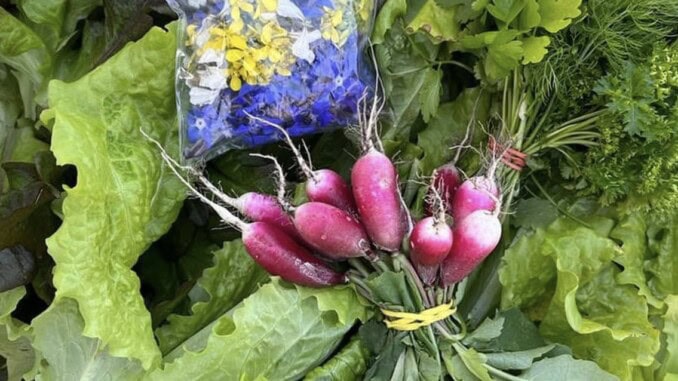
Editor’s Note- We are delighted to introduce a new column, Happy Gardening by Joanna Kotwis. While Autumn may not seem like prime garden time, it’s an ideal moment to start to prepare. With economic challenges looming for many, growing your own food is like printing your own money. Joanna has excellent advice perfectly tailored to our own climate zone here in Southern California.
Garden seasons – Culver City has two growing seasons. Fall season occurs when temperatures are cooling down, and for that reason, October and November is the best time to plant. The plants have enough time to adjust to the new space and grow when it’s raining in the winter. Our other season will start in the Spring.
Now, you’ll want to buy smaller plants (since they have been in the pot for a short amount of time), and will grow better once in the soil. Avoid getting plants that are blooming; you want the bloom to come when the plant is all happy in your garden. You do not want the plant to be root bound, with roots coming out from the bottom of the pot, since it’s a sign that a plant has been in the pot for too long.
Dig a hole and add some fertilizer design for newly transplanted plants. You also want to cover the soil with mulch, such as shredded wood chips, that help create organic matter and hold in the moisture. For veggies, use decomposed mulch like GroMulch.
Never mix wood chips with soil — that’s how you create fungus. Move the wood chips to the side, plant, and then push the wood chips back. All trees, flowers, shrubs, natives, as well as some vegetables can be planted starting as early as November.
Happy Gardening!
November Garden Tasks
November is the best time in California to plant garlic and onions. This way you will get a much bigger harvest.
Clean the veggie space at least two weeks before planting, so that unwanted insects and diseases will have time to disappear before new plants arrive.
Bushes, shrubs, trees, and ground covers, other than tropicals, are best to be planted in Fall before the rain starts.
Plant Spring flowering bulbs like daffodils
Divide irises every 3-4 years so that they continue blooming.
Water citrus evenly. If the roots go dry, citrus fruit has a higher chance of splitting.
Broad cast (do not plant it rows, just spread) seeds of carrots, radishes, and lettuce.
In the veggies garden plant: seedlings (small plant) of broccoli, cabbage, kale, and brussel sprouts. From seedling or seed, plant lettuce, fava beans, dill, leeks, parsley, cilantro, celery, spinach, Swiss chard, beets, collards, Asian greens, arugula, and watercress. It’s best to grow radishes, carrots, and peas from the seed.
Lettuce, radishes, spinach, dill, and cilantro could be seeded every several weeks so you have new plants coming throughout the season. Those plants sprout quickly, so planting them over and over again will give you a crop for a longer period of time.
Cabbage, kale, brussel sprouts, cauliflower, and broccoli need a lot of room. So before they take over, quickly plant growing plants like lettuce, radish, cilantro, and dill around them. You will harvest them before the larger plant will need the room.
Joanna Kotwis has been a gardener since she was five years old, growing up surrounded by gardeners at her home in Poland. Plants were always part of her life. Both her mom and her aunt taught me how to love anything green. After living in California for over two decades, she has learned about our unique plant zone. “My love for gardening took me on a path of becoming a garden teacher and later landscape designer. I honestly believe that there are no bad gardeners; we just need knowledge and patience to help things thrive.”
Joanna Kotwis


